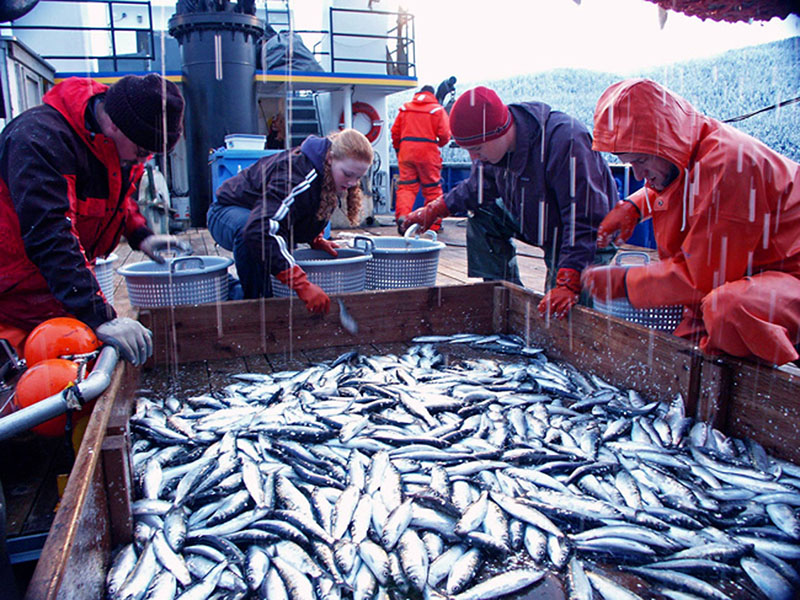The Togiak herring run arrived about 10 days early last April, and the fishery opened on the 17th, the earliest ever for Alaska’s primary producing herring fishery. Strong biomass in the Togiak fishery warranted a purse seine quota of 28,782 short tons and a gillnet quota of 8,365 tons.
The fish showing up on the grounds well ahead of schedule left 17 seine fishermen and four processing companies scrambling to make the long haul to the grounds in hopes of catching the fish before they spawned out. It didn’t help that first week of the fishery the fleet faced tough weather, which made for poor aerial spotting and meager catches. In the end, the seine fleet managed to harvest 15,171 tons. Interest among the gillnet sector of the fleet was limited to just three boats last year. During the heyday of the fishery, the fleet consisted of more than 150 gillnetters and 200 seiners.
Prices of $50 per ton have dampened effort during the past decade; however, the fleet received $100 per ton in 2016. The 2017 quota for Togiak, meanwhile, has been set at 22,943 tons for the seiners and 6,883 tons for the gillnetters.
Much farther to the south, in Southeast Alaska, Sitka seiners harvested 9,758 tons short of a 14,949-ton quota. A mixture of ripening fish and those that had already spawned out made it hard for the fleet of 48 boats to find marketable fish, and they ended up leaving about a third of the quota uncaught.
“We had a very short time frame in which we could harvest the fish,” says Eric Coonradt, area management biologist with the Alaska Department of Fish & Game, in Sitka. “The pre-spawn fish were mixing with spawn-outs, and after we’d caught about 66 percent of the fish, we just couldn’t find good fish.”
The 2017 quota has been set at 14,649 tons, and Coonradt adds that the predominant 4-year-old fish in 2016 will be closer to the desired market size of around 130 grams, or about 4.5 ounces, in 2017.
The 2017 sac roe quota for Sitka has been set at 14,649 tons.
Statewide average ex-vessel prices remain in the doldrums. Prices fell precipitously from around $400 per ton in 2012 to around $100 in 2014, according to data with ADF&G. Togiak fish have been stuck in the $50 per ton range in recent years while Sitka prices run about double or triple that, depending upon the size of the fish and their favor in the Japanese market.
Coonradt says processors paid around $250 for the Sitka fish in 2016 and he expects the markets to be similar or slightly stronger in 2017.







